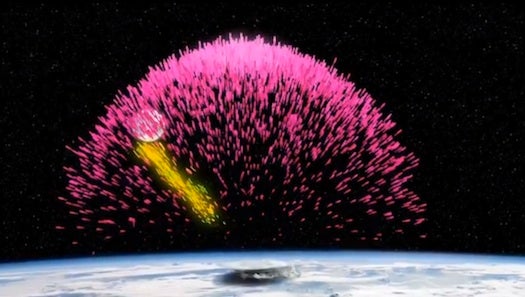Spying On Thunderstorms From Space [Video]
The International Space Station takes a look at the other side of the storm.


Red Sprite Seen From The ISS
NASA wants to know what’s up with thunderstorms. Not the flashy bits–the thunder, the lightning, yada yada. Pretty, but we see that all the time. NASA, as usual, is aiming its sights a little higher, on what’s happening above the clouds.

With a new experiment on the International Space Station, called “Firestation,” (please read the name with this soundtrack), the space agency will be exploring what’s going on with things like dark lightning (terrestrial gamma-ray flashes)–bursts of gamma radiation released within a storm cloud–and the colorful types of lightning known as red sprites and blue jets and elves.

Dark Lightning Flash Above Earth
Firestation involves a bunch of sensors mounted on the ISS that will look–through radio, optical and gamma wave detection–at the links between regular ol’ lightning, dark lightning, jets of antimatter and the red and blue flashes that shoot out of the tops of clouds. It’ll run for a year, observing thousands of thunderstorms, around 50 strokes of lightning a day, and hopefully be able to tell us more about the mysterious phenomena in the upper reaches of the clouds. Firestation is set to be up and running sometime this month.